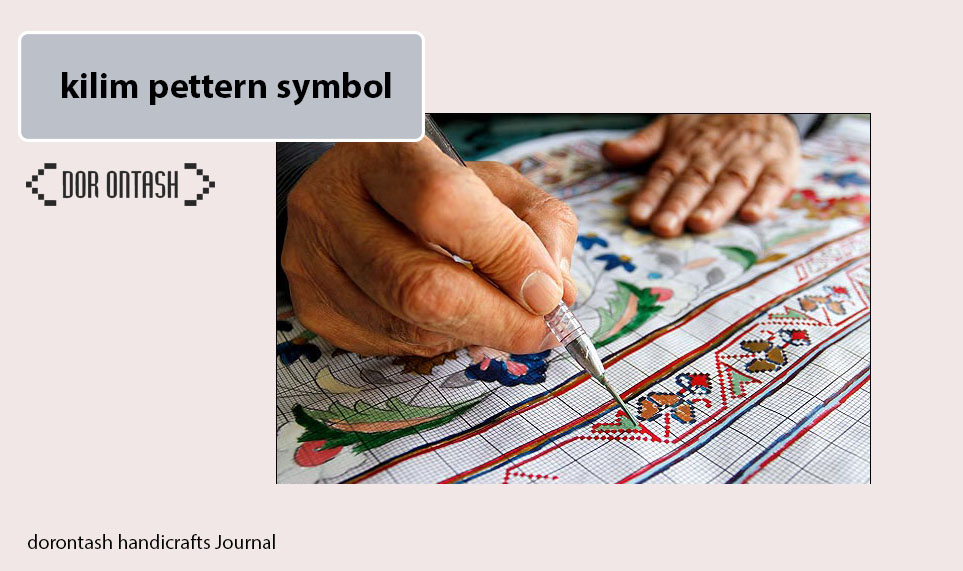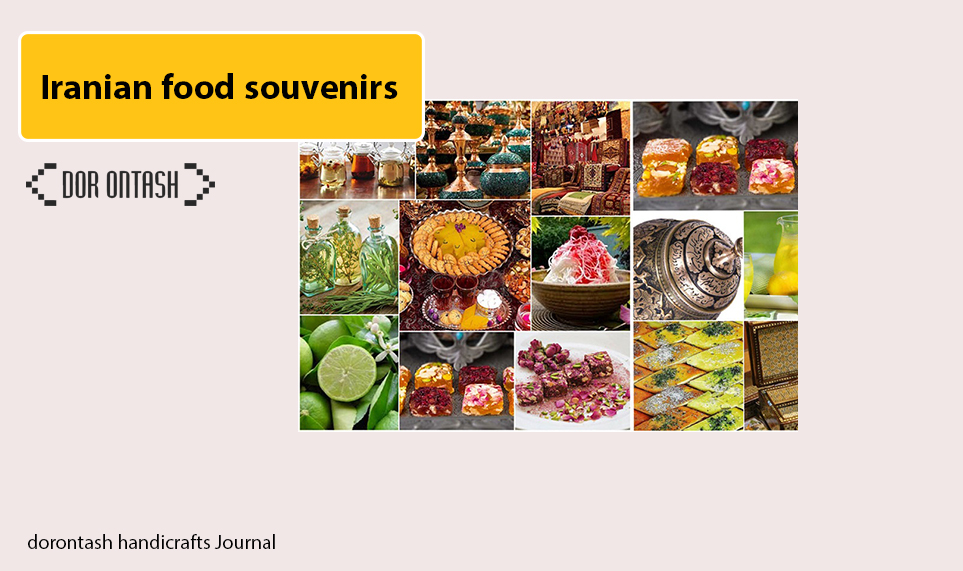The art of carpet weaving belongs to our country, that’s why knowing the types of persian rugs is one of the topics that many of us are interested in to find out about its details; But when we enter the mysterious world and the characteristics of Iranian carpets, we see how little we know about this mysterious world.
Iranian carpet is the most important known artistic brand of Iran in the world and it is an old industry that all of us Iranians have dealt with to some extent. We grew up on it and we have dreamed with its pictures. But maybe, except for a few of us who have studied it according to our interest or job, the rest of us don’t know much about it. In fact, our knowledge and awareness about Iranian carpets is often limited to the geography where we grew up. In this article, we are going to examine the types of Iranian carpets with specific categories.
Types of persian rugs
One of the most important classifications of Iranian carpets is the classification based on the place of carpet weaving . In many encyclopedias compiled for carpets, Iranian carpets have been classified according to their weaving location and about 100 entries have been defined for Iranian carpets based on geographical location.
Although the variety of Iranian carpets is beyond this category. For example, in this category, carpets woven by Iranian nomads have been placed in a general category called nomadic carpets . But if we look closely at nomadic carpets, we will face a world of differences, which we will discuss in detail in a separate article.
Iranian carpets can be classified based on the design and material of the threads and also the classes that are woven on it. Of course, these days, other categories such as modern carpets or antique carpets , as well as hand-woven carpets and machine-made carpets may also be common; But here we intend to categorize and introduce Iranian carpets based on their place of weaving. Although for the correct classification, we must consider at least one hundred categories; But for ease of work, we introduce the geographical areas of the types of carpets in larger categories and explain them further.
Iranian hand-woven carpets are divided into several general categories based on the place of weaving :
- Carpets of the Central Plateau of Iran; (Qom, Kashan, Isfahan, Yazd and Kerman)
- Zagros carpets; (Central, Hamedan, Lorestan, Ilam, Chaharmahal and Bakhtiari)
- nomadic carpets; Carpets (Lari and Bakhtiari, Shahson Qashqaei and Afshari)
- Sistani and Balochi carpets
- Carpets of the center of Iran, carpets (Tehran, Tafarsh, Taleghan and Semnan)
- Carpets of northern Iran
- Khorasan and Mashhad carpets
- Turkish carpets; (West and East Azarbaijan, Ardabil, Zanjan provinces)
- Kurdish carpets; (Kurdistan, Kermanshah and West Azerbaijan)
- Iranian hand-woven carpet
All kinds of central plateau carpets
Several carpet weaving poles in the central plateau of Iran, such as Kashan and Qom rugs , are world famous. The central plateau of Iran is mainly urban or urban carpets. The common designs in Qom carpets are Lakh and Taranj, Vagira and Bete and Tree designs. The knots of the Kashan carpet are symmetrical, and the most popular designs of the Kashan carpet are the lach and tanraj, the vase, the hunting ground, and the altar.
Isfahan carpets are both urban carpets and local and nomadic carpets. This area is more famous for weaving urban carpets with asymmetric knots. Kerman carpet is one of the most special types of Iranian hand-woven carpets in which designs of flowers, blossoms, leaves, birds and animals are used.
Because of its proximity to Kerman, Yazd carpets are affected by its maps and are as busy as Kermani carpets.
 All kinds of carpets of Zagros residents
All kinds of carpets of Zagros residents
Hamadan province is one of the most important carpet weaving areas of Iran in the geographical region of Zagros, in terms of quantity and number. Medium-sized commercial carpets are common in this area. Like two-armed and coarse-woven carpets, which are called “Musool” in the market. Hamadan carpets are woven in curved and broken branch styles, sometimes geometric, and often with fringed designs and bouquets of flowers and flowers . persian rugs
In Central and Arak provinces, four types of Sarouk, Farahan, Armenian and Mahal carpets and Meshkabad carpets are woven. Lorestan carpets have a thick and woolly texture with dark colors such as blue, brown and red. The weavers of Lorestan pay special attention to the texture of bushy and all-over designs in the weaving of their carpets .
In Chaharmahal and Bakhtiari, carpets with clay designs are also common. In this design, the text of the carpet is regularly gridded with square and hexagonal or rhombus shapes. Inside each of these geometric shapes, figures such as a cypress tree, Majnoon willow branch, a vase full of flowers, a bird, or a mother and child type of single bat are woven .
All kinds of nomadic carpets
Nomadic carpets are often woven by Iranian nomads and most of them are mental weavers. Similarity is meaningless in these designs and even this feature and simplicity of the motifs is one of the main factors of the beauty of nomadic designs. The carpets of the Shahson tribes have a Kurdish color and glaze, so that their double-woven products have a very tight and compact texture and are not very delicate.
The history of weaving among Ler nomads is not more than one hundred and fifty years, and their weaves are mostly in geometric styles with simple designs. Carpets in this area are often woven thickly using natural colors.
One of the most famous and popular nomadic carpets is the Qashqai carpet in Fars province . Among the most famous Qashqai carpet motifs are Kaleh Esbi, Termehgol, Shahpasand, Mahramat, etc. The designs and patterns used in Qashqai carpets are divided into two main and separate groups called traditional designs and patterns and regular patterns.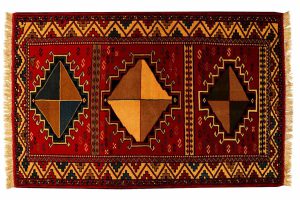
Introducing Sistani and Balochi carpets
One of the oldest types of hand-woven Iranian carpets is the Baluchi rugs by the Baloch nomads of North Khorasan, which are woven especially around Torbat Heydarieh, Kashmer (Tarshiz), Torbat Jam, Sarkhs, and only a few are woven in the southern regions and Qadri in Sistan.
Torbat Heydarieh and Torbat Jam are from the central and eastern cities of Khorasan province, respectively, and they have maintained their reputation and reputation as the largest center for the production of Baloch carpets for many years, and now as the largest center for the production, supply and sale of Baloch carpets, they have a major share in the production of carpets. They are in charge of this province. persian rugs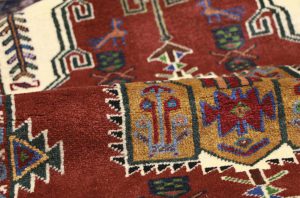
Introducing the types of carpets in the center of Iran
The developments of carpet weaving in Tehran have been very extensive in the last three decades; But in general, Tehran carpets have the following features;
- Carpets with a bright background and using old motifs or new shapes are woven in Lakh and Taranji designs, a tree with animals, a simple tree, geometric Khatam Shiraz, bazobandi and Herati with a Samavari border.
- Tehran carpet threads are made of cotton and their thin weft is blue and thick weft is white.
- The wool used in these carpets is of good quality, and for this reason, Tehran carpets have a silky and velvety feel.
- Their knots are of the Persian weaving type and the height of the piles is short and their texture is relatively compact and light.
Taleghan carpet is also a mentally woven carpet and has a geometric and broken design. In this carpet, being related does not mean much, and the simplicity of the motifs is one of the most important beauty factors of this carpet. persian rugs
Mehdishahr district and Shahrood city are considered important carpet and rug production centers in Semnan province. Semnan carpet weavers use patterns and designs from other regions such as Tabriz, Mashhad, Isfahan, Nain, Kashan, Yazd and Kerman. In the background of some carpets, slimy flowers, blossoms, buds and various leaves with delicate branches can be seen, and in some designs of Shah Abbasi, Afshan, Taranji, clusters, yarrow leaves, trees, and hunting fields are woven.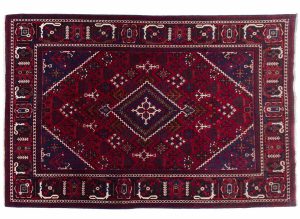
Introducing the types of carpets in the north of Iran
The northern provinces, especially Mazandaran, have had a say in the art of carpet weaving for a long time, and the woven carpets of this province, especially in the Kalardasht region , are world famous. Kalardasht carpet, which is also known as “Khorsek” carpet, is a native art of this region, and the maps in it are also inspired by mental reflections, and in other words, due to its roughness, it is derived from the nature and mountainous location of the harsh cold of this region. And with the passage of time due to migration from other provinces such as Kermanshah, Fars and Kurdistan to Mazandaran and Kalardasht, this art has entered this region.
Carpet weaving is also common among the Turkmens in northeastern Iran . Currently, three groups of Turkmens based in Iran are engaged in carpet weaving; Two clans from the great Yamut clan, named Atabai, Jafarbai, and another part of Teke clan, weave the best Turkmen carpets. In general, most of the designs of the original Turkmen carpets are all repetitive, that is, they are formed by repeating one or more motifs.
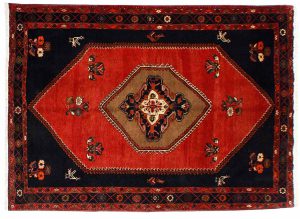 Getting to know Mashhad and Khorasan carpets
Getting to know Mashhad and Khorasan carpets
Khorasan carpet weaving has passed one of its most flourishing historical periods during the reign of Shahrukh Mirza during the Timurid era. Various areas of carpet weaving in Khorasan region include: Mashhad, Birjand, Mod, Kashmer, Qain, Derakhsh, Torbat Heydarieh, Sabzevar, Shandiz, Ferdous and Tabas.
The oldest type of historic carpet in Mashhad, which is about five centuries old, is a type of prayer carpet that was gifted to King Suleiman the Magnificent by Shah Tahmasab . One of the most important points in Mashhad carpets is their special texture. Although the Persian knot is more common, the Mashhad carpet weave is a combination of Persian and Turkish weaves. This texture increases the strength of Mashhad carpets to a great extent .
Mashhad and Khorasan carpets are one of the most beautiful and oldest types of Iranian carpets, which still retain their place among fans of Iranian handmade carpets.
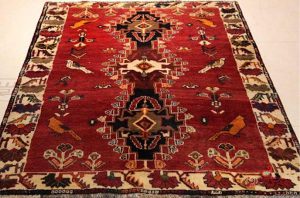 Introducing the types of Turkish woven persian rugs
Introducing the types of Turkish woven persian rugs
The heyday of Azerbaijan’s handwoven carpet production was during the Safavid rule. Because the Safavid kings brought together great weavers by setting up first-class carpet weaving workshops in this city.
The weaving style of Azerbaijan carpets is divided into 3 categories:
- Rustic texture
- Textured city
- Textured nomads
Urban woven carpets of Azerbaijan are mostly produced in areas such as Tabriz, Isko, Marand, Maragheh, Khoy and Urmia . The most finely woven carpets in Iran are woven in Tabriz; The knot is symmetrical (Turkish) with a hook and two wefts (as in all Turkish regions) .
The rural carpets of Azerbaijan weave belong to villages and localities such as Haris carpets , Mehraban, Bakshaish, Sharbian, Garavan and around the cities of Ardabil, Sarab, Meshkinshahr and Kalibar.
Among the prominent designs and cities of Azerbaijan’s carpet weaving art, Khoi with its small fish carpet and Takab with its Afshar carpet have a long history and have gained global fame and reputation for themselves. Harris Turkish carpet has many fans outside of Iran due to its Indian motifs.
 Introduction of Kurdish carpets
Introduction of Kurdish carpets
Kurdish carpets are one of the types of Iranian carpets. The art of carpet weaving is an important part of the cultural heritage of the Kurdish people of northwestern Iran. The distinctive feature of Kurdistan carpets is the unique geometric designs that are often drawn based on the complex symbols of the Kurdish language. The pile of the Kurdistan handwoven carpet is usually stretched with thick wool and the carpet is woven with a double knot. The two most important centers of carpet weaving in Kurdistan are Sanandaj and Bijar, which are world famous.
Kurdish Qochan and Bojnoord carpets and nomadic Sangar carpets are other woven fabrics of Kurdistan. Carpet weaving in Kermanshah also began with the production of Seyyed Abdulahi carpets, and other designs that were influenced by Saroq, Kerman and Bijar carpet patterns, actually show the history of urban carpet weaving in Kermanshah.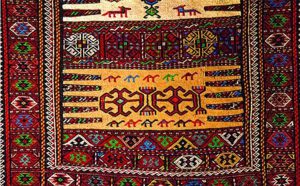
Types of Iranian machine-made carpets
In the areas where we talked about the characteristics of Iranian carpets in general, in addition to hand-woven carpets, there are also many machine-made carpet factories that try to provide cheaper and more economical carpets than hand-woven carpets. These factories have been able to cover all kinds of tastes by producing modern Iranian carpets . Also, in addition to carpets, they try to respond to all the needs of the audience by producing rugs , carpets , rugs , rugs, underlays and rugs.
persian rugs panel
One of the charms of the world of carpets is the exquisite carpets that are woven with various shapes and designs. Carpets are very diverse and are available in the market as hand-woven and machine-made. To get to know more about the types of carpets, we have written a separate guide for it, reading it will help you get to know more about these beautiful works and if you are interested, have one of them in your home.

